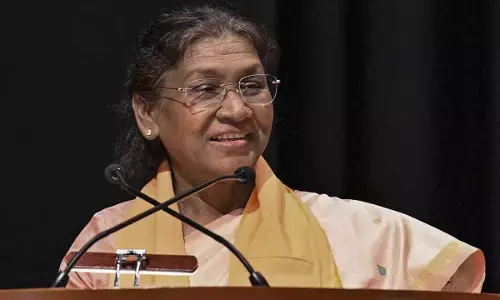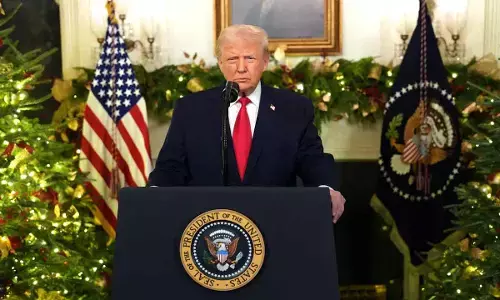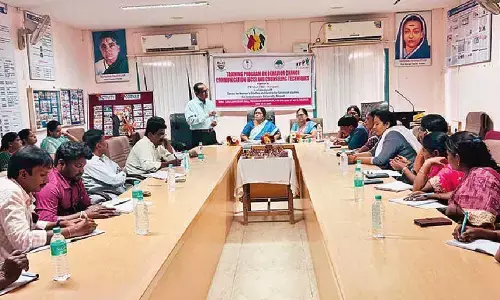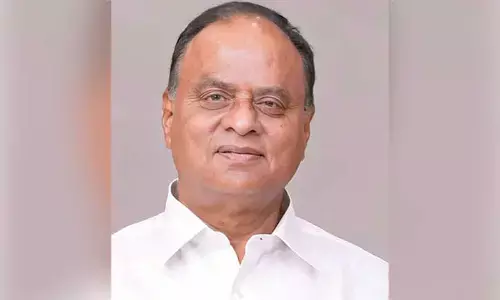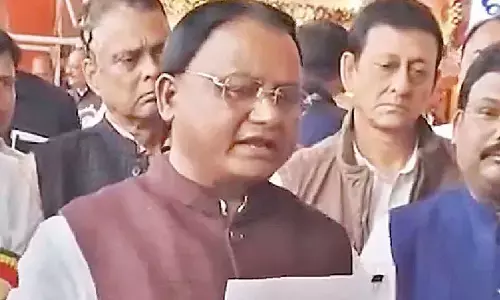Reforms in India’s Foreign Trade Policy
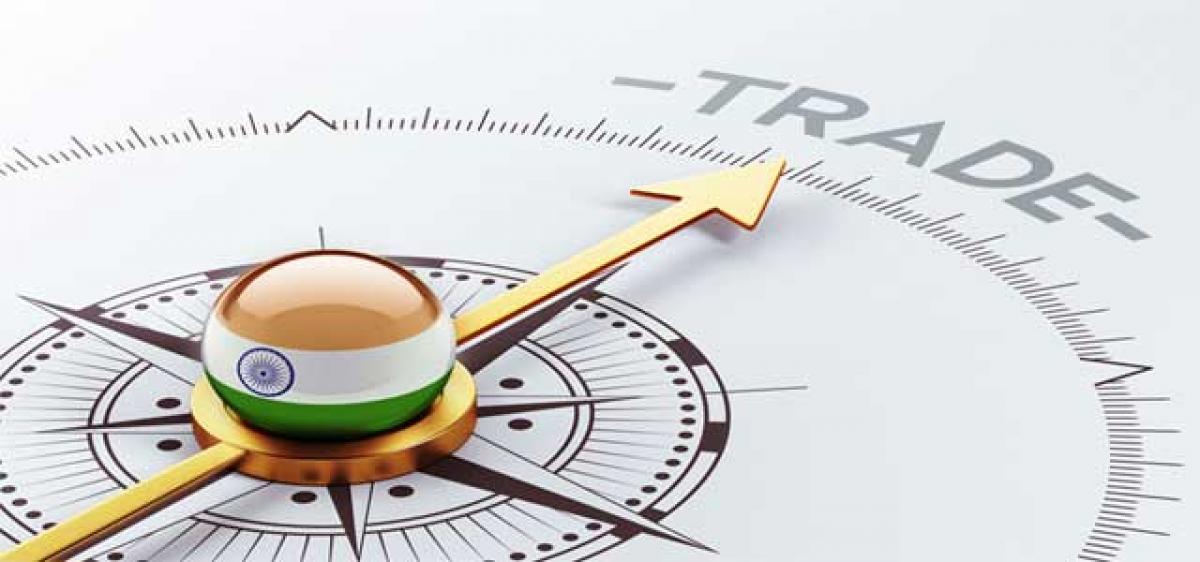
Make in India, Digital India, Skill India, The list of slogans for the government’s economic initiatives is ever expanding.
Make in India, Digital India, Skill India, The list of slogans for the government’s economic initiatives is ever expanding.
This public relations effort remains critical for the government, which needs to reshape how foreign business people perceive India to increase foreign investment.
However, many local business people are concerned that the government has not implemented more measures to support its bold sloganeering.
The Modi administration’s first Foreign Trade Policy, unveiled on April 1, represents a pragmatic step forward in this regard. Much like the admiration’s first budget, unveiled on February 28, the policy targets critical industries with useful reforms and incentives.
ECONOMY
General Studies 3
- Indian Economy and issues relating to planning, mobilization of resources, growth, development and employment.
- Effects of liberalization on the economy, changes in industrial policy and their effects on industrial growth.
| Expected Questions Q: Consumer preferences and production techniques are undergoing a major change in the recent times. Discuss how these changes are impacting the trade patterns and how India needs to restructure its trade policy in the light of these changes. Covered in IAS Mains -2015 |
Perhaps more importantly, however, the trade policy has sought to back-end the government’s ambitious goals.
The global economy is undergoing a major transition whether it is from the point of view of the producer or the consumer. This major change is occurring due to the rapid technological and socio-economic changes that are occurring.
Technological changes have led to major innovations and faster obsolescence of existing products. Earlier, the developing economies had more time to adapt and evolve with the changes in the environment. However, the availability of time is a luxury nowadays which is not easily available.
Consumers are defining consumption patterns globally and owing to their technological literacy skills, they are able to adapt to the new products and technologies at a rapid rate.
As a result of the above changes and use of artificial intelligence in production processes, there is need for the emerging economies to reorient their trade policies in a manner that keeps pace with this quick evolution.
India: Foreign Trade Policy
Although India has steadily opened up its economy, its tariffs continue to be high when compared with other countries, and its investment norms are still restrictive. This leads some to see India as a ‘rapid globaliser’ while others still see it as a ‘highly protectionist’ economy.
Till the early 1990s, India was a closed economy: average tariffs exceeded 200 percent, quantitative restrictions on imports were extensive, and there were stringent restrictions on foreign investment. The country began to cautiously reform in the 1990s, liberalizing only under conditions of extreme necessity.
Since that time, trade reforms have produced remarkable results. India’s trade to GDP ratio has increased from 15 percent to 35 percent of GDP between 1990 and 2005, and the economy is now among the fastest growing in the world.
Average non-agricultural tariffs have fallen below 15 percent, quantitative restrictions on imports have been eliminated, and foreign investments norms have been relaxed for a number of sectors.
India however retains its right to protect when need arises. Agricultural tariffs average between 30-40 per cent, anti-dumping measures have been liberally used to protect trade, and the country is among the few in the world that continue to ban foreign investment in retail trade. Although this policy has been somewhat relaxed recently, it remains considerably restrictive.
Nonetheless, in recent years, the government’s stand on trade and investment policy has displayed a marked shift from protecting ‘producers’ to benefiting ‘consumers’.
This is reflected in its Foreign Trade Policy for 2004/09 which states that, "For India to become a major player in world trade ...we have also to facilitate those imports which are required to stimulate our economy."
India is now aggressively pushing for a more liberal global trade regime, especially in services. It has assumed a leadership role among developing nations in global trade negotiations, and played a critical part in the Doha negotiations.
Regional and Bilateral Trade Agreements
India has recently signed trade agreements with its neighbors and is seeking new ones with the East Asian countries and the United States. Its regional and bilateral trade agreements - or variants of them - are at different stages of development:
- India-Sri Lanka Free Trade Agreement,
- Trade Agreements with Bangladesh, Bhutan, Sri Lanka, Maldives, China, and South Korea.
- India-Nepal Trade Treaty,
- Comprehensive Economic Cooperation Agreement (CECA) with Singapore.
- Framework Agreements with the Association of Southeast Asian Nations (ASEAN), Thailand and Chile.
Preferential Trade Agreements with Afghanista, Chile, and Mercosur (the latter is a trading zone between Brazil, Argentina, Uruguay, and Paraguay).
Problems
- India’s trade policy has a major limitation wherein it focuses on incentivising businesses after exports have taken place. As a result the trade promotion incentives do not target emerging firms to attain export competitiveness but reward already successful exporters to improve their margins.
- The trade policy does not have provisions for interventions focussing on value-addition and employment generation. This implies that the policy is not working on long term structural measures but more towards short term result oriented measures which are not sustainable in the long run.
- Trade promotion is still restricted to traditional trade fair type activities. No doubt that these activities are important for promotion and business development, but a change of approach is required in this age of growing internet and mobile technology which requires activities to be more network oriented.
- Absence of institutions which can provide support for new product development and their placement in the global market in a selfless manner. These institutions can be used for ancillary activities such as development of prototypes, research and development etc.
- India’s trade policy also suffers from an archaic design. The trade policy and negotiations over emphasis on tariffs which are not very important for market access gains. Trade today is guided by various other factors such as technical and quality standards.
- India has not been successful in tapping the potential that the huge domestic markets and the economies of scale offer to attract foreign direct investment and technology transfers. This is observed based on trends which show that MNCs attracted by the size of the Indian consumer base often do not expand operations in India.
- Investors have to face a combination of high transaction and input costs, supply-side constraints, and infrastructure deficits which is a major obstacle in setting up and operations of industries. As a result international investors also show reluctance in setting up and expanding business in India.
Reforms needed
India has to overcome the existing limitations in the trade policy. Simultaneously it also has to gear up for the upcoming changes in technology and socio economic setup to meet the rapidly evolving needs and demands of consumers and producers India needs to bring changes as suggested below.
- India should restructure in a manner where it is able to move human resources and capital from under-performing or dying sectors and re-employ them in more competitive activities.
- The trade policy should be on which adequately rewards value-addition and promotes employment in more productive sectors.
- To match the pace of changes taking place, India should promote investment in innovation and new product development and also help such products find a global market.
- Fair market access for Indian products subject to stringent technological and quality standards in global markets is also essential.
- The huge Indian markets and the domestic economies of scale that they offer should be tapped efficiently to attract FDI in productive sectors.
- Indian firms should be assisted and aided to be able to meet the quality and technical standards defined by government regulators or as a result of the competition in the market. Trade agreements and other institutional solutions can be used to reduce the cost of complying with these standards. This will also help in empowerment of the Small and Medium Enterprises (SME).
The challenges posed by changes in technology and global consumer preferences are changing the pattern of FDI-led outsourcing and reducing the future FDI-led export growth.
The governments measures in areas of administrative changes through ease of doing business reforms and infrastructure development might help in reviving the potential of FDI in economic growth.
A review of the overall trade strategy is the need of the hour for India. The changes have to be made in terms of trade promotion schemes and activities and the design of trade agreements and negotiating priorities.
These measures will determine India’s ability to undertake structural change and push for longer-term competitiveness.








